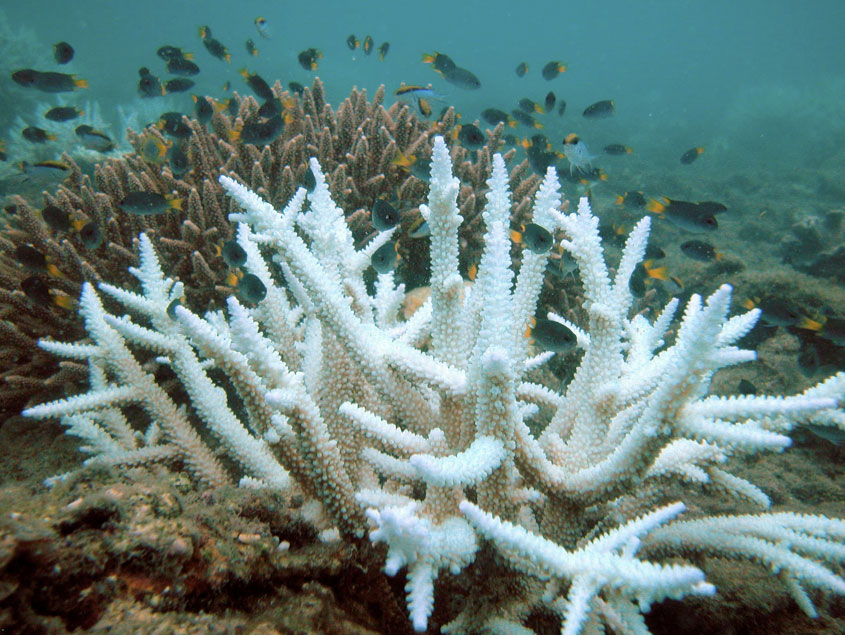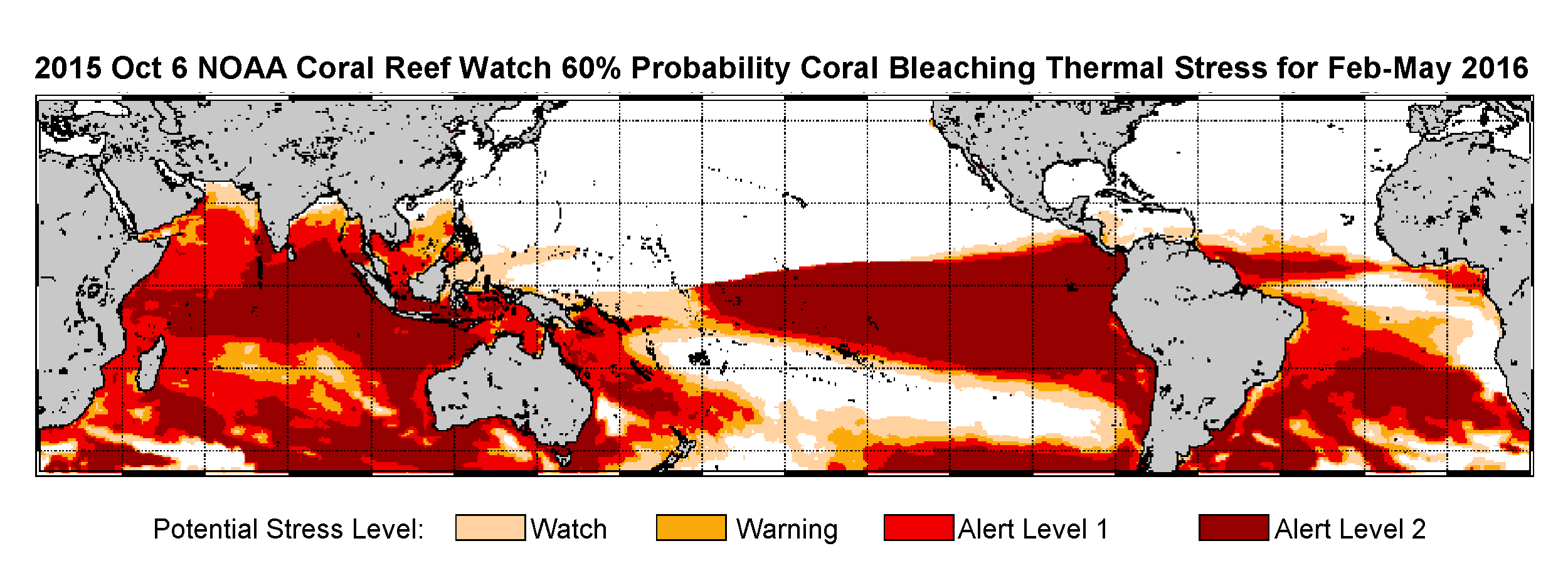El Nino: Impact on West Papua & Coral Bleaching
El Nino refers to the warming of the eastern Pacific Ocean along the equator from the International Date line to around the west coast of South America. It impacts weather and water temperature around the world and we have begun to see the effects of the current one. Expected to persist throughout the winter of 2015-16, this El Nino will be the strongest yet according to scientists.
Weather
In Indonesia, a strong impact has already been felt. Although the waters of the eastern Pacific are warming, the waters of the western Pacific are cooling, as we can attest to. In Triton Bay, we saw water temperature around 23 degrees in Sept, 2~3 degrees colder than normal for this time of the year. The other major impact is on rainfall. Southern California is expected to get much needed rainfall, but drought is widespread throughout Indonesia. In our neighbouring country of Papua New Guinea the drought is now 3 months, crops are failing, and water shortages are a major problem. West Papua, the Indonesian province where we are located, shares the island of New Guinea with the country of Papua New Guinea.
So is El Nino related to climate change? There is no consensus as more data is required, but as with the Polar Vortex during the winter of 2013~14 (which we blogged about here), what is not in doubt is that we are seeing more frequent extreme weather events, and the combination of these two phenomena will have a devastating effect on the world’s coral reefs.
Coral Bleaching
Coral is actually made up of organisms called polyps, and these polyps have microscopic algae called zooxanthellae which carry out photosynthesis, give coral their color, and help the corals build reef structures. Under certain “stressful” conditions (for example, changes in water temp, salinity, oxygen levels, and the presence of herbicides and even sunscreen ingredients), the coral polyps will expel the zooxanthellae. When ocean surface temperatures rise for an extended period, the zooxanthellae are expelled and the coral lose their color and appear to be “bleached”. If the zooxanthellae do not eventually return, the coral polyps will die off. Studies have shown that coral bleaching has occurred when water temperature rises as little as 1 degree above the normal summer maximum, though the temperature at which coral colonies bleach differs from location to location.
On October 8, the US National Oceanic and Atmospheric Administration (NOAA) declared the onset of the third global bleaching event this year. The first two global bleaching events, in 1998 and 2010, were both El Nino years and this third mass bleaching event is expected to be the biggest yet, impacting more than one third of all coral reefs around the world. Already rising ocean water temperature due to climate change coupled with El Nino conditions are the two main factors. Coral bleaching has already hit Hawaii hard this year, and is spreading to Florida and the Carribean. By next year, due to El Nino, coral bleaching will spread to the Indian Ocean (Maldives) and the south-eastern Pacific (Australia’s Great Barrier Reef).
Why is this a problem? Because coral reefs, which cover less than 0.1% of the ocean floor, are some of the most biodiverse environments on the planet and are home to countless species of fish and coral. The loss of these reefs would damage the fisheries that help to support hundreds of millions worldwide as well as the tourism industry, which is one of the best drivers of sustainable development in developing countries. Reefs also act as natural barriers that protect coastlines from flooding and erosion, and the organisms found on reefs have the potential to provide new medicines to science.
What Can be Done?
According to Jennifer Koss, acting program manager for NOAA’s Coral Reef Conservation Program, “We need to act locally and think globally to address these bleaching events. Locally produced threats to coral, such as pollution from the land and unsustainable fishing practices, stress the health of corals and decrease the likelihood that corals can either resist bleaching, or recover from it. To solve the long-term, global problem, however, we need to better understand how to reduce the unnatural carbon dioxide levels that are the major driver of the warming.”
Here are some articles we researched for this blog post:
4 million in the Pacific without food or drinking water
El Nino from the other side of the Pacific pond
Massive Coral Bleaching Event Underway
NOAA declares third bleaching event


